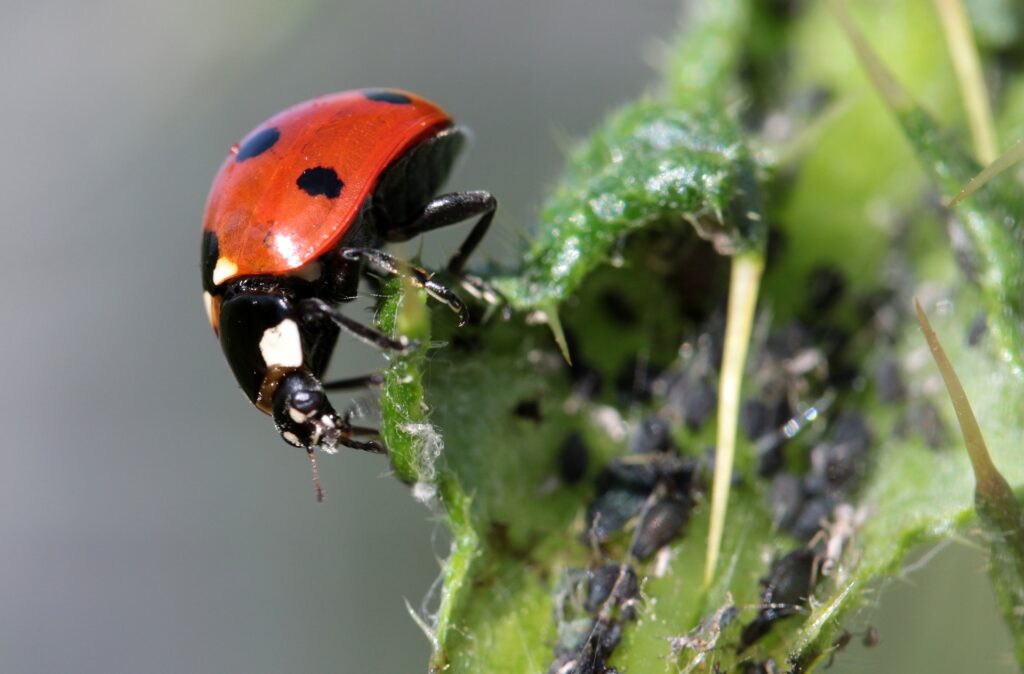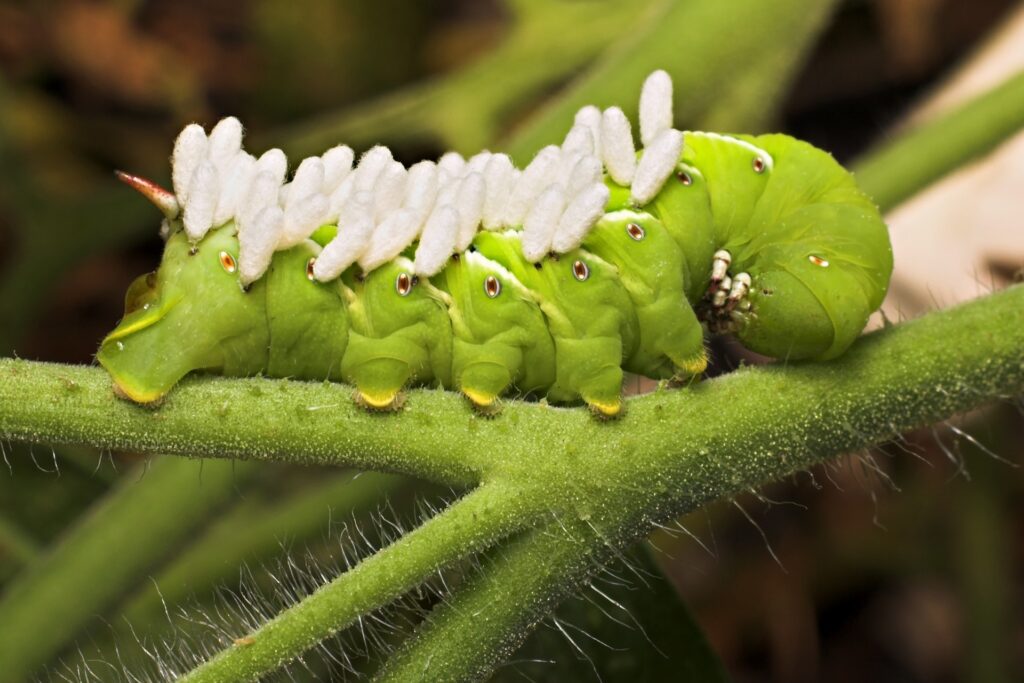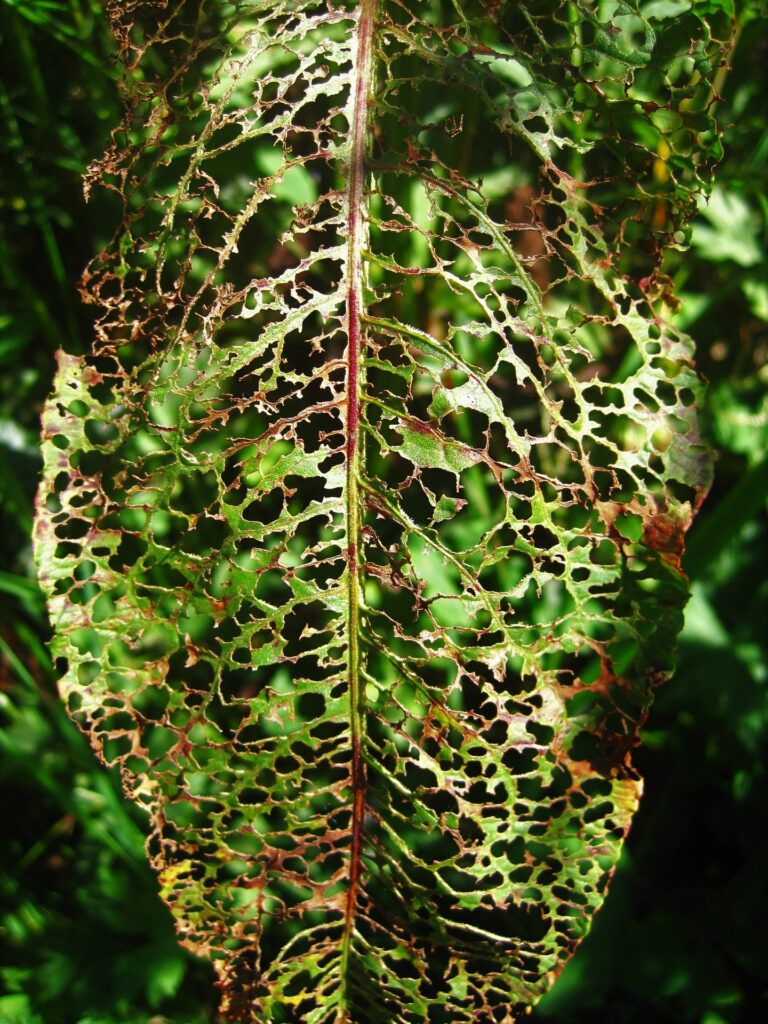Small Pests Strike Back!
Pests, pests and more pests… Small Pests Strike Back!
By this point, it is likely that all of us have established a functional kitchen garden. Despite our efforts, various challenges persist, such as dealing with pests, watering issues, slow plant growth, and other factors. Among these challenges, pests stand out as a significant concern that most gardeners will inevitably face during their gardening journey.
Pest infestations may come and go, and in some fortunate instances, they might not significantly affect the garden (which is always our hope). However, for the majority of gardeners, detecting pests becomes apparent through visual cues such as damaged leaves, rotten stems, or deformed fruit. To mitigate the impact of pests, it is essential to inspect our gardens daily, enabling us to identify early signs of infestation.
Among the common pests encountered in gardens are aphids, cutworms and hornworms, leaf miners, slugs, and earwigs. In this newsletter, we will delve into the identification and control of these bothersome pests, equipping you with effective strategies to safeguard your garden.

Investigations & Solutions for Small Pests
During your daily garden walks, it is essential to closely observe your plants for any signs of damage, unusual appearances, or changes since the previous day or night. Keep in mind that most pests tend to hide on the underside of leaves, so be sure to inspect that area thoroughly. Additionally, pay attention to the stems and fruits of the plants, as these three points of inspection will help ensure the well-being of your garden.
Here are some effective methods to deal with specific pests:
Aphids – These small, six-legged pests often gather in clusters and are attracted to succulent stems resulting from pruning. While they do not typically last long, their rapid reproduction can lead to a continuous infestation. For control, you can spray water on the aphids if the infestation is minimal. However, if the problem persists, introducing ladybugs into your garden can help keep the aphid population in check.
Cutworms & Hornworms – Cutworms are relatively small and tend to be active at night while hiding in the soil during the day. They leave behind cut stems near the base of plants or chew on the foliage. Hornworms, on the other hand, are larger and adept at camouflaging themselves. They have a particular fondness for decimating tomato plant foliage and even consuming tomatoes. To manage cutworms, you can pick them off or use a mixture of water and dish soap. As for hornworms, manual removal is necessary (take care, as they can grow up to 4 inches in length!).
Leaf Miners – These tiny pests are commonly found on Swiss Chard. They cause leaves to appear sunburnt and become thin, with small white eggs visible on the underside. To control leaf miners, thoroughly spray the plant with a mixture of water and dish soap, ensuring the underside of the leaves is covered. Additionally, remove any white eggs using your fingers.
Slugs & Earwigs – Both slugs and earwigs can wreak havoc on your plants. Slugs are notorious for consuming lettuce overnight and staying hidden in dark, cool areas during the day. Their slimy trails may give away their movements. Earwigs generally do not cause significant damage as they primarily feed on other pests, but they can create holes in leaves. To manage these pests, you can set traps, such as shallow containers filled with beer for slugs and containers containing soy sauce and vegetable oil for earwigs.
By employing these strategies, you can effectively address the specific challenges posed by different pests, ultimately promoting the health and vitality of your garden.

5 Key Takeaways
1. Regular inspection: Conduct daily garden walks to closely observe your plants for any signs of pest damage, unusual appearances, or changes. Early detection allows you to address pest issues before they escalate into major infestations.
2. Targeted identification: Learn to identify common pests that affect kitchen gardens, such as aphids, cutworms, hornworms, leaf miners, slugs, and earwigs. Accurate identification enables you to implement specific control measures for each pest.
3. Integrated pest management (IPM): Adopt an IPM approach, which combines various strategies to manage pests effectively. This may include cultural practices (like crop rotation and companion planting), biological control (using natural predators or beneficial insects), mechanical methods (handpicking or traps), and judicious use of chemical treatments only when necessary.
4. Regular sanitation: Keep your garden area clean and free from debris, as some pests thrive in cluttered and damp environments. Removing fallen leaves, weeds, and decaying plant material can help reduce pest populations and prevent their spread.
5. Monitor and record: Keep track of pest activity in your garden by maintaining a pest journal or log. Note which pests you encounter, their population levels, and the effectiveness of different control methods. This information will guide you in making informed decisions for future pest management strategies and can be valuable for successive gardening seasons.

What’s next?
We trust that this week’s newsletter has provided you with valuable insights and inspiration for your kitchen garden endeavors. But rest assured, our journey together doesn’t conclude here.
Stay connected with us on social media for an abundance of gardening tips, exclusive behind-the-scenes glimpses, and real-time updates. Engaging with our community and learning about your unique gardening experiences brings us immense joy. Join the conversation and become a part of our flourishing community of plant enthusiasts on Instagram, Facebook, TikTok, and YouTube.
Feeling motivated and envisioning your own kitchen garden project? We are more than delighted to have a chat with you. Our team is ready to offer guidance, share our expertise, and collaborate to bring your garden dreams to fruition. Whether it’s a design consultation, construction services, or a personalized plan, we are eager to embark on this exciting journey alongside you.
Don’t hesitate to reach out and initiate the conversation. Share your aspirations, ask questions, and allow us to assist you in turning your vision into a thriving reality. We are thrilled to be part of your kitchen garden success story!
We are here to help you achieve your gardening goals! Reach out with any questions that might come up throughout your journey.
We are excited to announce that there are some new DIY plans on our Etsy store. Whether you need some more storage in the garden, are looking to spruce up your curb appeal or are looking for a new way to grow your tomatoes, we have something for you!
Check it out here – https://www.etsy.com/ca/shop/WillowLaneGardenCo
Best regards,
Tessa & Kyle
Willow Lane Garden Co.
P.S. Tag us in your garden photos and stories on social media. We’d love to see your green thumb in action!

